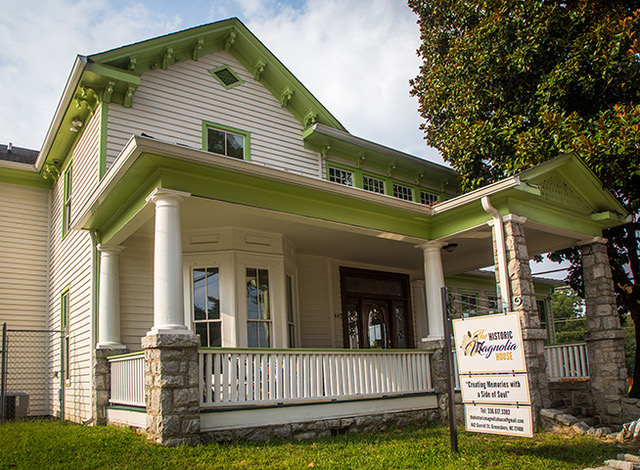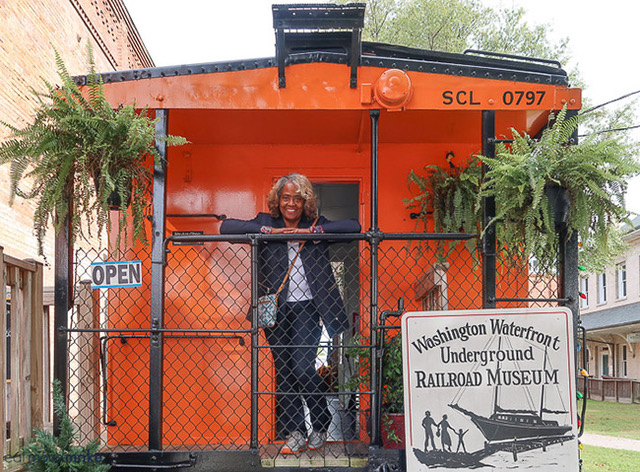Great historic sites draw travelers to the past with here-and-now experiences that add meaning and understanding to what came before. Travelers interested in Black history will be rewarded on the mountains-to-sea journey across North Carolina while enjoying dynamic cities and charming towns.
Asheville
Residents as well as travelers to this Appalachian city sing the praises of the impressive architecture that survived the Great Depression. The countermelody rues what was lost to urban renewal, a national policy that wiped out vibrant urban neighborhoods across the country. With a passion to preserve and restore, Asheville artists, entrepreneurs and civic leaders have opened windows on Black culture and heritage in this mountain destination.
Travelers can tap into the movement with a walk around The Block, the historic central business district for the Black community. The YMI Cultural Center, one of the oldest Black cultural centers in the United States, drives its historic mission to be a center of civic and cultural life. At the Foundry Hotel’s Benne on Eagle restaurant, diners can taste the culinary tradition carried on by a team that includes chef Hanan Shabazz, a restaurateur from the neighborhood’s heyday. LEAF Global Arts and the NOIR Collective AVL celebrate the creative spark. Hood Tours provide a guided experience of The Block and other neighborhoods of interest.
Greensboro
The site of landmark Woolworth’s sit-in of 1960 makes this bustling Piedmont city an essential destination for anyone interested in the civil rights movement. Yet Greensboro is more than a one-and-done with the International Civil Rights Center and Museum. On a quiet residential street less than a mile away, Historic Magnolia House offers an experience rooted in the days of Green Book travel.
Once a recommended site in “The Negro Motorist Green Book,” the old Magnolia Motel had fallen into disrepair by the time Sam Pass bought it with the goal of restoring the structure he had loved as a neighborhood kid. With daughter Natalie Pass Miller joining the effort, Historic Magnolia House has earned support from the National Trust for Historic Preservation and again opened its doors to the public. People who come for dining, concerts and other events commune with history in displays that showcase such famous guests as James Brown, Ray Charles, Jackie Robinson, Ike and Tina Turner and also illuminate Pass family contributions to local civil rights history.

Front exterior shot of historic Magnolia House in Greensboro with signage. Wrap around porch and lime green molding with stone pillars in foreground.
Washington
Energy flows through the vibrant downtown on the Pamlico River waterfront. Historic buildings anchor a commercial center where lively businesses (among them a bookstore/wineshop combo and an outfitter with connections to bike and paddle trails) meet the arts, a community market and the world’s first Estuarium.

Leesa Jones at Washington Waterfront Underground Railroad Museum, courtesy visitwashingtonnc.com
The river and the Pamlico Sound have always defined this place. With the opening of the Washington Waterfront Underground Railroad Museum in a restored Seaboard Coat Line Railroad caboose, travelers encounter a fascinating history of freedom seekers and abolitionists gaming a system of plantations and maritime enterprise to help enslaved Blacks escape bondage. The museum grew out of the work of Leesa Jones, whose passion for the project was ignited by researching her own family’s history and creating the African American Walking History Tours in her hometown. From the museum to the docks, travelers can connect to the larger story and the meaning found in clothing, crops, songs and other details from life.
Find more ideas for exploring North Carolina’s Black history at visitnc.com.










